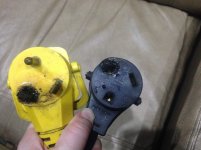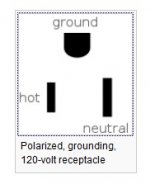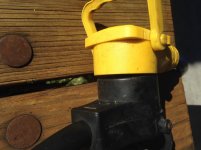Hi MizMary,
That looks like the neutral connection that's burned up. When you partially lose the neutral connection, voltage inside can increase dramatically. There's a technical explanation of that in the
Lost Neutral Presentation located here.
If the voltage went up due to the bad neutral connection, it's possible (not necessarily likely) that you may have stressed electrical components in your appliances. The failures might show up over the coming weeks and months. I'd keep the damaged pigtail and pictures in case you need to file an insurance claim in the future.
One other thing I'd suggest would be to take voltage readings at some of the outlets in different areas of the trailer to make sure nothing else is going on.
If you have 120V at the pedestal, you should see 120V between HOT and NEUTRAL, and between HOT and GROUND on your outlets. And the voltage reading between NEUTRAL and GROUND should be very close to zero. If you see a drop, say 115V between HOT and NEUTRAL and 5V between NEUTRAL and GROUND, you may have something else contributing to the problem you found.
I don't mean to alarm you and I don't think you should worry. There's a good chance you caught this early enough that you won't experience any consequences from this problem. But if you do start experiencing multiple failures, you'll have some info that may help.




